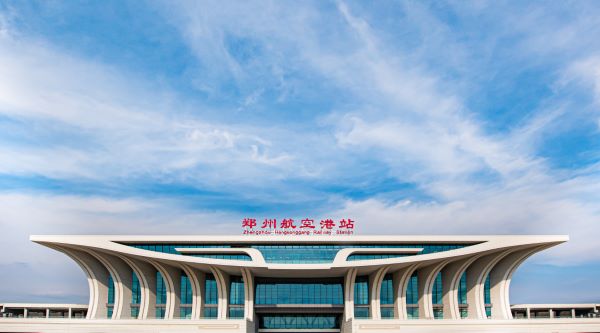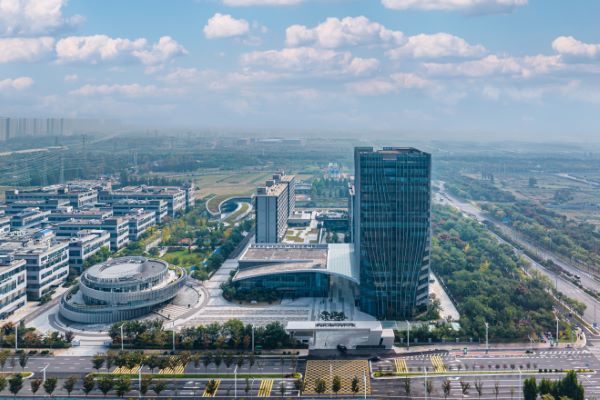To say my second visit to the Zhengzhou Airport Economy Zone (ZAEZ) in China’s Henan Province this past March was eye-opening would be a massive understatement. I’m still getting my head around the development that has taken place since I was there several years ago.
That first trip was hampered by a thick mixture of fog and smog that made viewing the area, and what little was built at the time, a challenge. I did tour the still-under-construction, 5.2 million-sq.-ft. Terminal 2 at Zhengzhou Xinzheng International Airport. On this last trip, I flew into and out of it.
The 288-square-mile ZAEZ (that’s the size of Bengaluru, India) is the first and only national-level airport economy zone in China approved by the State Council, and Beijing has the Zone’s managers working overtime to bring it to completion. Key parts are complete. Companies have operated in the Zone for several years, including iPhone producer Foxconn, in a 15-million-sq.-ft. complex, and EV manufacturer BYD, in a 12-million-sq.-ft. facility where production commenced in April 2023. (Yes, the scale of the ZAEZ and its occupants is staggering.)
These two companies alone employ hundreds of thousands of people, many of whom live in on-site accommodations. The others mainly live in one of the hundreds of high-rise apartment buildings throughout the Zone. They were relocated to these apartments from their small villages and farms by the government as plans for ZAEZ got under way.
“iPhone assembler Foxconn, employing some 250,000 workers in the ZAEZ, initiated the Zone’s industrial surge,” says Dr. John Kasarda, chief advisor to the ZAEZ and president of the Aerotropolis Institute China, with whom I travelled to Zhengzhou in March. “More than 300 firms followed Foxconn in such sectors as aerospace, biomedicine, intelligent electronics, new energy vehicles and semiconductors.”
High-Speed Hub

Image courtesy of ZAEZ
The Zhengzhou Hangkonggang Railway Station (1.6 million sq. ft.) for high-speed trains opened in 2022 with connections to the airport and the Zhengzhou Metro, the city’s rapid transit rail network. It connects the Zhengzhou-Wanzhou and Zhengzhou-Fuyang high-speed railways, with more rail connections planned.
High-value goods and even EVs made at the nearby BYD complex can be shipped by rail, which alone distinguishes ZAEZ as a state-of-the-art logistics hub. The railway station is the heart of the intermodal, 19.3-square-mile ZAEZ International Inland Port. It’s much more than a facility for shipping goods in and out. It’s virtually a city in its own right with districts reserved for everything from warehousing and distribution to logistics parks to supply chain service centers for a range of industries. It has a bonded zone, similar to a foreign trade zone, for storing imported goods, space for logistics R&D and an area reserved for future rail-water interchange.
The railway station is in close proximity to a city center taking shape as a world-class conference and exposition destination. Five- and four-star hotels are planned, as are a resort hotel, office and commercial space, retail and dining and green space.
With much of the logistics infrastructure in place, ZAEZ is focusing now on talent and urban development, which will happen quickly, if previous growth is any indication.
“To position the ZAEZ at the forefront of China’s Fourth Industrial Revolution, which is being driven by applied research, breakthrough technologies, innovation and entrepreneurship, the Zone’s leaders are implementing a new strategic initiative called Aerotropolis 4.0,” says Dr. Kasarda. “Firms in the 4.0 economy, such as those engaged with autonomous vehicles, genetic engineering, the metaverse, robotics and virtual reality, depend especially on highly educated professional talent. The ZAEZ is reinforcing its transportation and industrial advantages with talent recruitment incentives and providing the institutional, residential and urban amenities that will help attract and retain this talent.”

